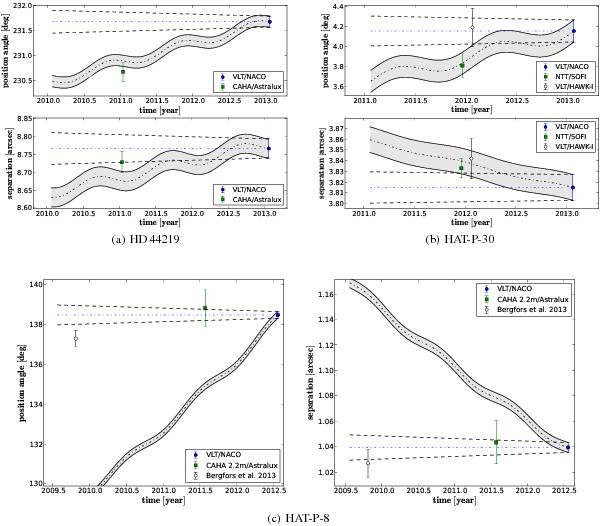Fig. 2

Astrometric measurements of the companion candidates’ positions relative to the primary stars versus time. Shown in each case are the separation and the position angle of the companion candidate. The gray area enclosed by the oscillating lines marks the position where a non-moving background source would be expected due to the proper motion of the primary star on the sky. The oscillation is a parallactic effect introduced by the Earth’s revolution around the sun. The area enclosed by the dashed lines marks the position that would be expected for a co-moving object, taking orbital motion into account. For the separation, an edge-on circular orbit with a semi-major axis identical to the projected separation of primary and companion candidate was assumed. For the position angle, a respective face-on orbit was considered.
Current usage metrics show cumulative count of Article Views (full-text article views including HTML views, PDF and ePub downloads, according to the available data) and Abstracts Views on Vision4Press platform.
Data correspond to usage on the plateform after 2015. The current usage metrics is available 48-96 hours after online publication and is updated daily on week days.
Initial download of the metrics may take a while.





